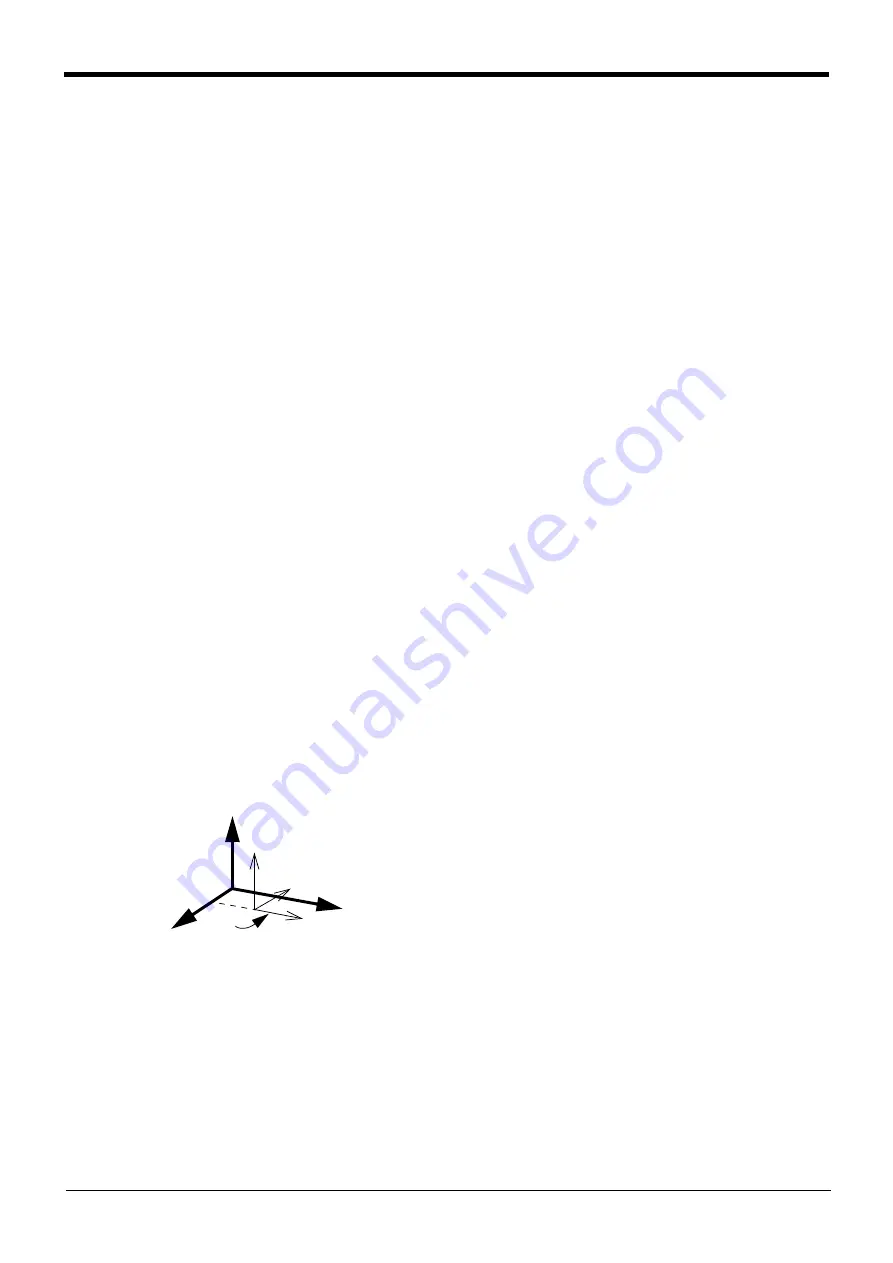
4-174
Detailed explanation of command words
[Explanation]
(1) Values subject to base conversion (coordinate values) represent position data for the origin point of the
base coordinate system as viewed from a world coordinate system which is newly defined. Therefore,
when you use the robot's current position to specify base conversion data with coordinate values defined
by a Fram function or the like, do so by inversely converting the coordinate values [for example, Base
Inv(P1)]. [for example, Base Inv(P1)].
Note that when you specify a work coordinate system number, the above inverse conversion is accom-
plished automatically in an internal process.
Elements X, Y and Z of position data indicate the amount of translation from the origin point of the world
coordinate system to that of the base coordinate system. Also, elements A, B and C indicate how much
the base coordinate system is tilted relative to the robot's coordinate system.
XDistance to move parallel to X axis
Y ............ Distance to move parallel to Y axis
Z ............ Distance to move parallel to Z axis
A ............ Angle to turn toward the X axis
B ............ Angle to turn toward the Y axis
C............ Angle to turn toward the Z axis
Elements A, B, and C are set to take a clockwise move as a forward rotation looking at the plus side from
the origin point of the world coordinate system.
(2) The contents of the structural flag have no meaning.
(3) Base coordinate system which has been changed by this command is saved in parameter MEXBS and
retained after controller power-off, too.
(4) Performing a base conversion changes the robot's current position to values that refer to the newly
established world coordinate system or work coordinate system. The target position specified by the
movement command will also be treated as a position in the newly established world coordinate system
or work coordinate system.
(5) You should note that the base conversion data differs in the valid axial elements depending on the
robot's type (structure of the robot arm). Refer to
Page 471, "5.6 Standard Tool Coordinates"
Also, refer to the following sections for more information relative to this command.
Page 147, "4.5.1 About the robot's coordinate system"
Page 148, "4.5.2 About base conversion"
(6) The system's default value for this data is P_NBase=(0,0,0,0,0,0) (0,0).
Fig.4-12:Conceptual diagram of the base coordinate system
Zw
Xw
Yw
Xb
Zb
Yb
50
90
Base (50,100,0,0,0,90)
World coordinate system: Xw, Yw, Zw
Base coordinate system: Xb, Yb, Zb
100






























